MHR

MANUFACTURED HOUSING REVIEW

News and educational articles to help you run your business in the manufactured home industry.
Sponsored by:
IN THIS ISSUE:
The Top 20 Biggest Pitfalls to Avoid When Buying a Mobile Home Park

Discriminatory Energy Regulation Looms
Once Again
Insurance Coverage for Losses Stemming from the Coronavirus
... and much more!
2020 | Quarter 1
Table of Contents Managing Contractors In Your Community 3 By Kurt D. Kelley, J.D. MHARR Positions Vindicated Once Again 5 By Mark Weiss A Coronavirus Recession? 9 By Brian S. Wesbury and Robert Stein The Top 5 Email Faux Pas Happening in Your Office and How to Solve Them 10 By Julia Morrell The Top 20 Biggest Pitfalls to Avoid When Buying a Mobile Home Park 13 By Frank Rolfe & Dave Reynolds Fed Should Be Decisive 18 By Brian S. Wesbury and Robert Stein Correcting the Manufactured Home Myth 19 By Mark D. Simpson Discriminatory Energy Regulation Looms Once Again 22 By Mark Weiss Manufactured and Modular Housing in Wisconsin Has an Annual Economic Impact of more than $2 65 Billion 26 By Amy Bliss and Professor Russell Kashian PhD Insurance Coverage for Losses Stemming from the Coronavirus 27 By Pamela D. Hans and Marshall Gilinsky
Managing Contractors In Your Community
By Kurt D. Kelley, J.D., President, Mobile Insurance
• Requiring the contractors carry Workers Compensation and General Liability insurance, even if there is no W2 community owner payroll, in the event the community is sued for injuries sustained by a contractor while in the community or the contractor hurts a third party.

Manufactured home community owners often hire contractors. Contractors perform community management, grounds maintenance, road and sidewalk repairs, utility system repairs, tree trimming, rental home repairs... When hired contractors cause a problem, the community owner is often the one to answer for it.
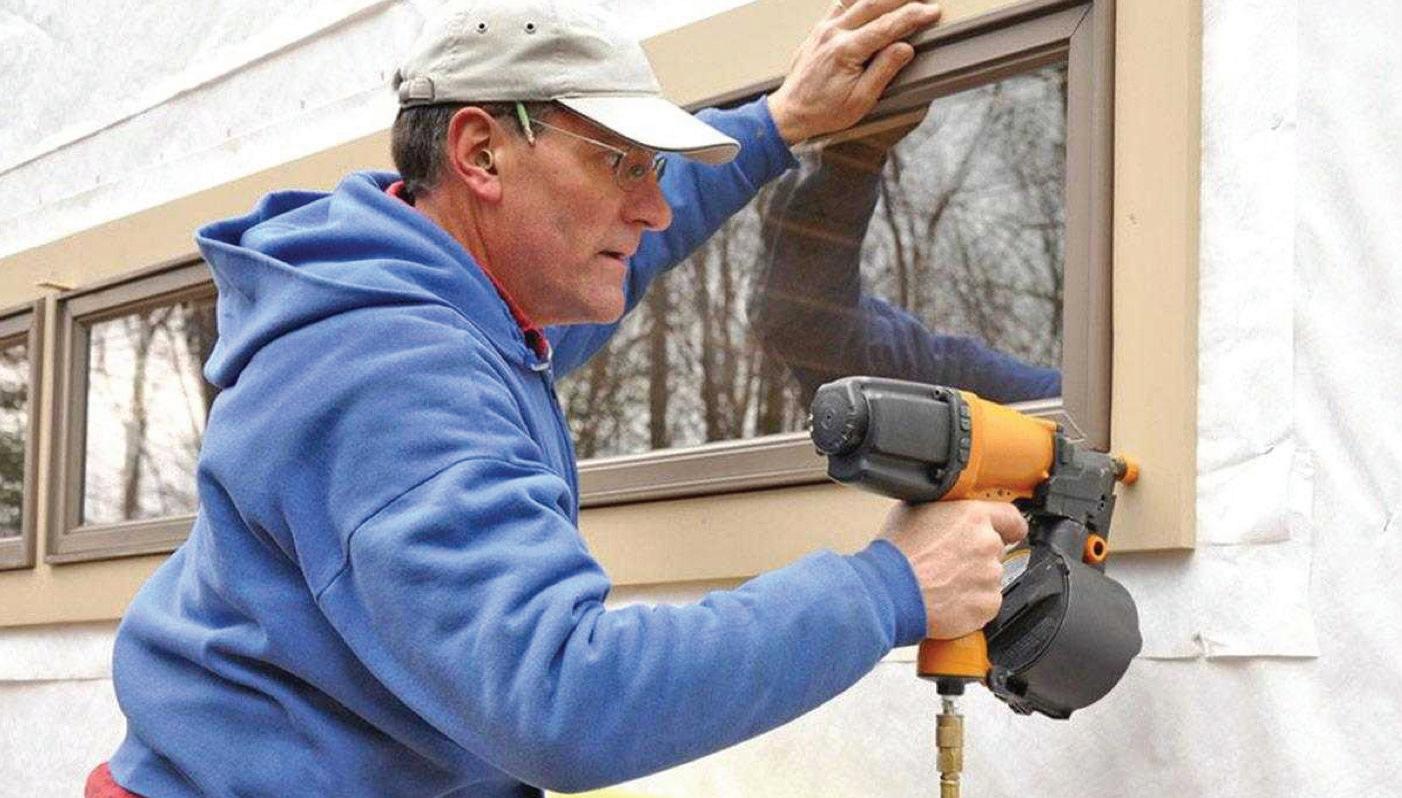
Community owners frequently report they cannot locate willing contractors who also carry Workers Compensation insurance. In most states Workers Compensation insurance is only mandatory for businesses with more than 1 to 5 employees. In Texas, there is no state law requiring workers compensation insurance. Also, members of a Limited Liability Company, (LLC), and small business owners often are not required to carry Workers Compensation insurance on themselves. Some contractors simply ignore Workers Compensation insurance requirements knowing they have little risk of losing anything if they don’t have it… heads I win, tails you lose.
Uninsured workers, hurt on the job, regularly seek compensation for their medical expenses and lost wages from the property owner or hiring party. You can reduce your risk of getting stuck this by:
• Seeking contractors who carry workers compensation insurance;
• Requiring all contractors to sign a contract noting the specific job requirements, costs, and stating the contractor will “hold harmless”, “defend and indemnify” the community owner in the event they or their workers sue the community owner or hurt any third parties (see MobileAgency.com / Forms Tab / Performance Agreement for Contractors and Contract Labor);
• Checking references and online comments about the contractor and their work history;
The contractor’s General Liability insurance shields the park owner in the event the contractor harms a third party while working for the park. For example, a contractor severs a water line in your park and stops water service for days resulting in surrounding businesses being closed and suing for lost revenues. If they don’t have General Liability insurance, the loss will be left to the park owner.
To verify a contractor maintains the proper insurance request a “Certificate of Insurance”. Contractors are used to supplying them. Their insurance agents generally produce them at no extra cost, too. Contractors who respond to such a request by claiming they don’t know what a Certificate of Insurance is, don’t have insurance. Requiring proof of insurance is a common practice of businesses that regularly hire contractors. Read the certificate and verify the coverage dates and coverage types on the certificate.
Choose your contractors smartly. Retain their Certificate of Insurance and a signed Performance Agreement for Contractors. When problems arise, you’ll be glad you did.
Kurt D. Kelley, J.D. President, Mobile Insurance Kurt@MobileAgency.com

800.458.4320 x 117
Attorney and President of Mobile Insurance, the largest manufactured home community and retailer agency in the country.
- 3 -




















Become one of our happy clients today! LUZ ALVIZO, Bond Manager 800 458 4320 extension 111 LUZ@mobileagency.com Se Habla Español Outstanding Service Superior Expertise
MHARR Positions Vindicated Once Again
The debate (not that there ever legitimately was one) is over. The law means what it says, and the time to restore the rule of law to the federal manufactured housing program is now. No more excuses. No more evasions. No more creative “interpretations.” No more gamesmanship. The time for full and complete compliance with the law – in this case the Manufactured Housing Improvement Act of 2000 –has, after twenty long years, finally arrived.
The ultimate “nail in the coffin” for nearly two decades of institutional, deep-state HUD defiance of one of the most crucial reform provisions of the 2000 law – defiance that MHARR has consistently opposed, but has just as consistently gotten a “pass” from some in the industry -- has been delivered, not surprisingly, by President Donald J. Trump. On October 9, 2019, President Trump issued two Executive Orders (EOs), EO 13891 (“Promoting the Rule of Law Through Improved Agency Guidance Documents”) and EO 13892 (“Promoting the Rule of Law Through Transparency and Fairness in Civil Administrative Enforcement and Adjudication”), designed to eliminate a longstanding abuse which has seen particular misuse within the HUD manufactured housing program – the utilization of non-published, sub-regulatory “guidance” memoranda, “operating procedures” and other similar pronouncements, issued without notice and comment rulemaking, in order to change the obligations and responsibilities of regulated parties or to establish completely new de facto requirements.
The federal laws governing manufactured housing have always been clear that HUD cannot use such evasions. The original Manufactured Housing Construction and Safety Standards Act of 1974 provides that Federal Manufactured Housing Construction and Safety Standards must be established “by order” and that all such orders must be adopted through notice and comment rulemaking, as must Procedural and Enforcement Regulations and interpretations of both the standards and regulations set forth in “Interpretative Bulletins.”
When the 1974 law was amended in 2000, Congress -- in response to HUD enforcement abuses documented by MHARR -- strengthened and expanded this safeguard. The 2000 reform law thus broke new ground in requiring not only notice and comment rulemaking for new or amended standards, regulations and Interpretative Bulletins, but also the prior submission of all such actions to – and consideration by – the newly-established Manufactured Housing Consensus Committee (MHCC). The 2000 reform law, however, went even further in its effort to end such abuses, by including a “catchall” provision in a totally new section 604(b)(6). That section requires
By Mark Weiss
that in addition to standards, regulations and Interpretative Bulletins, “any” HUD “statement of policies, practices, or procedures relating to construction and safety standards, regulations, inspections, monitoring, or other enforcement activities that constitutes a statement of general or particular applicability to implement, interpret, or prescribe law or policy” must be both submitted to the MHCC for prior consideration and subjected to notice and comment rulemaking. And, to put “teeth” into this requirement, the law states that any such change adopted without these procedures, is “void.”
It did not take long, though, for the HUD program, under former administrator William Matchneer, to mount an attack on section 604(b)(6), designed: (1) to limit its application and scope; (2) to subsequently read it out of the 2000 reform law entirely and, having accomplished that; to (3) revert to the type of “sub-regulatory” actions and practices that section 604(b) (6) was designed to ban and abolish in the first place. And while MHARR immediately and aggressively opposed each element of this attack, part of the industry sat on its hands as HUD, for almost a full decade, undermined this key reform.
The first attack came in May 2004 with a HUD opinion letter concluding that section 604(b)(6) – directly contrary to its clear language -- rather than being a broad “catchall” provision, designed to bring most program activities within the scope of MHCC consensus review, was actually designed to limit the scope of that review to an extremely narrow category of HUD “statements on the construction and safety standards and [their] enforcement.” Then, in February 2010, Administrator Matchneer, not long before his departure from the federal program, published an “Interpretive Rule” which further slashed the scope of section 604(b)(6), to the point that it was rendered meaningless and effectively read out of the law. Again, MHARR strongly opposed this baseless action while others were mute.
The ultimate result of these HUD actions was a steady stream of sub-regulatory and pseudo-regulatory program actions, particularly following the appointment of Pamela Danner as program administrator. At least 14 pseudo-regulatory “guidance” memoranda were issued between 2014 and 2016 alone that imposed new and/or expanded mandates on HUD Code manufacturers. These were in addition to major changes to Subpart I-related “monitoring” several years earlier to change its entire focus from the detection of specific alleged standards violations to a broader concentration on “quality control,” implemented via unpublished sub-regulatory “operating procedures” and memoranda that were never considered or recommended by the MHCC.
- 5 -
MHARR Positions Vindicated Once Again Cont.
The HUD program, consequently, has spent much of the past 20 years operating outside of the rule of law, in direct violation of its own authorizing statute, exercising authority it was never granted by Congress, in ways that were never authorized by Congress, while giving short-shrift to the statutory MHCC, all to the detriment of the industry – and particularly its smaller businesses – and the millions of Americans in need of affordable, non-subsidized home ownership.
Consequently, when President Trump issued Executive Orders 13771 and 13777 establishing a framework for the review and elimination of regulatory burdens that needlessly eliminate jobs or otherwise burden the national economy without delivering substantial countervailing benefits, and Secretary Carson, in turn, instituted a “top-tobottom” review of HUD manufactured housing program regulations, MHARR, in comments filed in 2017 and 2018, immediately called, among other things: (1) for the retraction of all “guidance” memoranda issued by the program without prior MHCC review and rulemaking which imposed new or

altered regulatory obligations and mandates; and (2) for the retraction of the 2010 Interpretive Rule which paved the way for the issuance of those “guidance” memoranda – and their enforcement against regulated parties – without the MHCC review and rulemaking required by the 2000 reform law.
And now, these longstanding MHARR positions have been directly imposed by the Trump Administration pursuant to EOs 13891 and 13892. EO 13891 thus provides: “Agencies may clarify existing obligations through non-binding guidance documents…. Yet agencies have sometimes used this authority inappropriately in attempts to regulate the public without following the rulemaking procedures of the [Administrative Procedure Act]. *** Americans deserve an open and fair regulatory process that imposes new obligations on the public only when consistent with applicable law and after an agency follows appropriate procedures. Therefore, it is the policy of the Executive Branch … to require that agencies treat guidance documents as non-binding both in law and in practice…. Agencies may impose legally binding
- 6 -
MHARR Positions Vindicated Once Again Cont.
requirements on the public only through regulations … and only after appropriate process….” (Emphasis added). EO 13892 further states: “Guidance documents may not be used to impose new standards of conduct .... The agency may not treat noncompliance with a standard of conduct announced solely in a guidance document as itself a violation of applicable statutes or regulations.
The ramifications of this policy for the manufactured housing industry, which is regulated under a statute that incorporates mandatory procedures for the adoption of standards, regulations and interpretations, as well as policies, procedures and practices, are – and will be -- profound. The policy enunciated in EOs 13891 and 13892 proves and reiterates that the 2000 reform law means what it says about prior MHCC review and notice and comment rulemaking (i.e., the “appropriate procedures” referenced in the EOs) for all HUD actions specified in sections 604(a) (i.e., standards) and 604(b) (i.e., enforcement regulations, Interpretive Bulletins and changes to policies, procedures and practices affecting the standards, enforcement and monitoring).
The impacts of this policy, moreover, will be both retrospective and prospective. Retrospectively, it means that all HUD manufactured housing program “guidance” documents and similar “operating procedures” adopted since the effective date of the 2000 reform law without: (1) MHCC review and recommendation; and (2) notice and comment rulemaking as expressly required by the 2000 reform law are expressly denominated “non-binding” and unenforceable in violation of both Administration policy and underlying law. Thus, any action by HUD to enforce a supposed requirement enunciated solely in a “guidance” document or similar pronouncement would be subject to court challenge and invalidation. Even more important, prospectively, this policy means that HUD (at least through the remainder of the Trump Administration and possibly longer if endorsed by a subsequent administration and/or a court ruling), may not impose any new binding requirements on parties regulated under the manufactured housing program via “guidance” documents or other similar pronouncements which have not been previously considered and recommended by the MHCC and published for notice and comment. Effectively, then, within the federal regulatory system for manufactured housing, these Executive Orders overrule, sub silento, HUD’s illegitimate and unlawful 2010 Interpretive Rule and restore the express mandate of Congress as set forth in the Manufactured Housing Improvement Act of 2000. This step, moreover, underscores the importance of an active and legitimate MHCC, and a fully-legitimate MHCC process which allows all interested parties to fully, freely and
effectively participate in the discussion and resolution of all issues and matters within the scope of the MHCC’s statutory role. Increasingly, though (and particularly since the elevation of Teresa Payne from “Acting” program administrator to “program administrator”) such participation by non-members has been severely and with no legitimate basis whatsoever, limited, restricted or eliminated altogether by HUD edicts as HUD personnel, at the same time, have begun to exercise increasing control over virtually all aspects of MHCC meetings and procedures. Clearly, HUD – in direct violation of both the word and will of Congress – wants to return to the days of the spineless, bankrupt and worthless National Manufactured Housing Advisory Council, which was scrapped by Congress in the 2000 reform law and replaced with the MHCC, which was designed and intended to act as an independent, accountable bulwark against HUD bureaucratic abuse, but has been steadily emasculated and undermined by the Department.
It is time for this illegitimate and unlawful activity – which is directly contrary to the regulatory policies of the Trump Administration -- to end in all of its various aspects. The October 9, 2019 Executive Orders are a good start toward returning the full rule of law to the HUD manufactured housing program. But there is more work to do, and MHARR will continue to press aggressively for a legitimate, lawful rulemaking regime at HUD which fully complies with the 2000 reform law, both substantively and procedurally.
Mark Weiss is the President and CEO of the Manufactured Housing Association for Regulatory Reform (MHARR) in Washington, D.C. He has served in that position since January 2015 and, prior to that, served as MHARR’s Senior Vice President and General Counsel.

MHARR is a national trade organization representing the view and interests of producers of HUD Code manufactured housing. Its members are mostly smaller and mid-sized manufacturers from around the country. Founded in 1985, MHARR is dedicated to fighting excessive and unnecessary regulation, to protecting, defending and advancing manufactured housing in accordance with federal law, and to preserving the affordability and availability of manufactured housing.
https://manufacturedhousingassociationregulatoryreform.org/ 1331 Pennsylvania Ave N.W., Suite 512, Washington, D.C. 20004 HARRDG@AOL.COM, 202-783-4087

- 7 -

www.sunstonerea.com
$1 ,
SALES 49,432 SI T E S $1,084,995,182 S ALES VOLUME 279 C OMMUNITIES CHICAGO DALLAS SALT LAKE CITY HOUSTON NASHVILLE SUNSTONE REA OFFICE LOCATIONS
SUNSTONE IS PLEASED TO ANNOUNCE:
000 , 000 , 000 + IN
A Coronavirus Recession?
No one knows with any real certainty how much, or for how long, the Coronavirus will impact the US economy. What we do know is that it will have an impact. And, after data releases of recent weeks, we also know that the US economy was in very good shape before it hit.
Nonfarm payrolls grew by a very strong 273,000 in January and another 273,000 in February. The unemployment rate was 3.5% in February and initial claims for jobless benefits were 216,000 in the last week of February. Retail sales in January were up 4.4% versus a year ago. In February, sales of cars and light trucks were up 1.9% from a year ago and were above the fourth-quarter average. This suggests that total retail sales for February rose as well.
Industrial production fell 0.3% in January, but likely rebounded sharply in February. After all, hours worked in manufacturing durable goods rose 0.9% in February and colder weather likely lifted utility output.
Housing starts have been particularly strong lately, coming in at an average annual pace of 1.597 million in December and January, the fastest pace for any two-month period since 2006. Yes, part of the surge in home building was due to good weather, so February will likely fall off to around a 1.49 million pace, which excluding December and January, would be the fastest pace of building for any month since 2007.
The ISM Manufacturing index slipped to 50.1 in February from 50.9 the month before, but a level above 50 still suggests growth in factory activity nationwide. The ISM Non-manufacturing index, which measures a much larger share of the economy, rose to 57.3 in February, signaling strength.
Putting all of this data into their model, the Atlanta Fed projects real GDP is growing at a 3.1% annual rate in the first quarter. That’s not a typo. However, March data, which isn’t available yet will likely bring this number down.
The early economic headwinds from the Coronavirus are coming from slower production in China, which likely led to a big drop in inventories. We expect this to pull first quarter real GDP down to a 2.0% growth rate and we are now thinking growth will be zero in the second quarter. After that, given previous episodes of rapidly spreading viruses, inventory replenishment should boost growth to the 3.5 – 4.0% annual rate range in the second half of the year.
This may seem optimistic, but keep in mind what happened when the “Hong Kong flu” hit the US from September 1968 through March 1969, killing around 34,000 people in the US according to the Centers for Disease Control. During the last quarter of 1968 and first quarter of 1969, real GDP grew at an average annual rate of 4.0%. The “Swine Flu” in 2009 also did not lead to a recession.
By Brian S. Wesbury and Robert Stein
However, a much more negative story unfolded in late 1957 and early 1958 when the US was hit by the “Asian flu,” which killed almost 70,000 in the US and didn’t spare younger people as much as the Coronavirus. Real GDP was growing around 3% annually in 1957, but as the flu started to peak in Q4, the economy shrank at a 4.1% annual rate, followed by an annualized 10.0% plunge in the first quarter of 1958, the deepest drop for any quarter in the post-World War II era (from 1947 through 2019).
But then, right after the plunge, the economy rebounded at a 7.8% annual rate for the next five quarters.
Before the Coronavirus hit we thought the odds of a recession in the next twelve months were about 10%. Now we think they’re around 20%. Higher, but not high. There is no precedent for the first social media panic regarding the flu. Either way, here’s a simple rule of thumb: if the unemployment rate goes up 0.4 percentage points or more compared to where it was three months prior then the US is probably in a recession, otherwise it’s probably not. The jobless rate was 3.5% in December, so unless it goes above 3.9% soon the economy is still growing.
The bottom line is that we’ve had severe flus before without a recession and when we did have a downturn, the economy bounced back very quickly. The stock market is pricing in a steep drop in profits, which is certainly possible. A strong recovery, which we expect, will reverse this as it has in the past.
BRIAN WESBURY
800 621 1675
https://www.ftportfolios.com/
Brian Wesbury is Chief Economist at First Trust Advisors L.P., a financial services firm based in Wheaton, Illinois.


ROBERT STEIN
800 621 1675
https://www.ftportfolios.com/
Robert Stein is Deputy Chief Economist at First Trust Advisors L.P. a financial services firm based in Wheaton, Illinois.
This report was prepared by First Trust Advisors L. P., and reflects the current opinion of the authors. It is based upon sources and data believed to be accurate and reliable. Opinions and forward looking statements expressed are subject to change without notice. This information does not constitute a solicitation or an offer to buy or sell any security.
- 9 -
The Top 5 Email Faux Pas Happening in Your Office and How to Solve Them
 By Julia Morrell
By Julia Morrell
Think about how many emails you send every day. Dozens? Hundreds? Who do you email? Clients? Vendors? Managers? The reality is that we experience so much variation in who we’re emailing, how often we’re emailing them and why we’re emailing them in the first place.
Because we’re often on autopilot, we rarely slow down to reflect on the quality of our email communications. Poorly written emails can cause confusion, lack of response and distrust.
These are the top five email faux pas happening in your office today:
understanding of various terms. When emails are forwarded on, the likelihood of the recipient understanding the jargon decreases and causes confusion. Solution: Never assume! Spell out abbreviations and acronyms in the first instance to ensure your audience understands what you’re talking about.
Writing long paragraphs. Imagine receiving an email notification only to open it and see one long paragraph. This can make us feel annoyed and disinterested. In today’s world, many individuals read and respond to emails on their smartphones, so we should consider this when drafting an email. However, sometimes we get stuck and think it’s easier to dump everything into an email and click send before reflecting on what we just wrote. Solution: Bullet points are a great tool for breaking up an email and making it easier to digest. Use bullet points to group questions, action items, etc. Don’t be afraid to start a new paragraph after just one sentence, avoid repetition and get rid of any extra, unnecessary information.
Using jargon. Acronyms, abbreviations, and industry language make communications less clear. Sometimes individuals who work at the same company don’t even share the same
Being too general. If you’re too general in your email, the recipient probably won’t get back to you in a timely manner. Phrases like “ASAP” and “let me know your thoughts” are open for interpretation. Solution: Include specific details to get what you want (dates, times, names, instructions), even in your subject lines. For example, a subject line that says, “Question about adding additional insured to policy 13-A” is much more specific than one that says “Question.” Be more specific in your call-to-actions as well. “Please advise” doesn’t give the

- 10 -
reader as much direction as asking a question like, “Would you like me to proceed with the home purchase today?”




Mirroring. Attempting to mimic another person’s writing style isn’t always effective for building professional relationships. If someone emails you and overuses punctuation and smiley faces, you might feel obligated to write in a similar style. The reason? We’re worried the other person will think we’re too stiff. Similarly, if someone emails you without a greeting and uses incomplete sentences, you might worry that if you don’t mirror their style, you’ll annoy them with your longer sentences. Solution: Stay professional, and maintain your confidence. If you need to soften your emails, you can always include a sentence like, “Thanks so much for your email!” or “I’m so happy that everything worked out for you!” There’s no need to go overboard with casual writing. Similarly, if you feel pressured to get to the point in an email, stick to what you know. Include a greeting and be polite, but review your email to make sure you’re not including any extra information.

Being too negative. We’re all in the business of providing excellent customer service in one way or another. When we deliver bad news via email, we should ask ourselves what we’re doing to foster the business relationship. Negativity can make others feel defeated, and they may not think of you for future business needs. Solution: Never deliver bad news first. An email that starts with negativity isn’t a good way to build a relationship. Focus on what you can do to help the individual first, and then explain what you can’t do. Also, avoid weak phrases like “unfortunately,” “I’m not really sure” and “it seems like.” Lastly, sometimes we just need to pick up the phone. Talking to someone over the phone can eliminate any negative tone and confusion.
Ms. Morrell is Assistant Vice President and Director of Corporate Communications for USLI, an insurance carrier located in Wayne, PA. She is responsible for maintaining clear and consistent messaging, both internally and externally. Ms. Morrell regularly facilitates business writing courses for employees, as well as email communication and grammar webinars for USLI customers.
- 11 -
The Top 5 Email Faux Pas Happening in Your Office and How to Solve Them Cont. SUBSCRIBE! Manufactured Housing Review Magazine www.manufacturedhousingreview.com staff@manufacturedhousingreview.com
The Manufactured Housing Institute of South Carolina Spring Meeting

When
May 5-6
Where
Hyatt Place/House located at 560 King St, Charleston, SC 29403 Special rate for attendees of the meeting of $189 a night for a room with a king bed.
mhisc.com/event/spring to register, book your room and access information about the event

Event includes
Rising Star Award Dinner
Roof Top afterparty
Golf Free CE Agenda
MHISC’s member-led committees will meet to discuss trends and projects to improve the industry
Our Mission - To maximize opportunities for South Carolinians to enjoy the benefits of factory-built homes.
- 12 -
Manufactured Housing Institute of South Carolina – founded in 1967 as a non-profit business association representing the manufactured and modular housing industries in South Carolina.
The Top 20 Biggest Pitfalls to Avoid When Buying a Mobile Home Park
Buying a mobile home park can be landmark decision that can put you on the path to financial freedom and a high return on investment. But that’s assuming that you purchased it correctly. Unfortunately, there are many issues that most buyers are unaware of but that can sink what appears to be a good investment in affordable housing. Here are the top twenty pitfalls to avoid when buying a mobile home park.
1. No permit or license
There is no possible business model than can make money from buying a mobile home park that is illegal. If a mobile home park does not have all necessary permits and licenses, then it should be avoided at all costs. And don’t let the simple fact that it’s been there for 50 years make you feel the park is fine for continued enjoyment. We looked at a park built in 1960 – and a large park at that – which was completely illegal and had only been left alone by the city for the past 55 years because the mayor was a friend of the owner. The city told us that they would immediately shut the park down when the owner sold it. You don’t want that buyer to be you.
There are three different possible classifications for a mobile home park’s status: 1) legal conforming (which means you could build it again today exactly as it appears) 2) legal nonconforming (which means grandfathered) and 3) illegal. While the first two are fine, the third is a disaster. It is important to note that mobile home parks have an extremely strong standing concerning legal-conforming “grandfathered” status, having been backed up on this right by several state Supreme Courts, the most recent being the Mississippi Supreme Court. Mobile home parks are defined as a grandfathered “use” under most zoning codes, and this gives some extremely strong safeguards for property rights.
2. Improper evaluation of price
You can’t make money with a mobile home park if you overpaid for it. There is a simple industry metric on price construction, and you can’t do it if you don’t know it.
The most common mistake that buyers make is to “cap” the parkowned home income, or be fooled by the seller into thinking that the standard operating expense ratio is 10% when it’s actually a range of 30% to 40%.
Let’s look at those two independently. If a mobile home rents for $600 per month – and the expenses are 30% -- then you might think that the value is $600 x .7 (net of expense ratio) x 12 (twelve months) x 10 (for a 10% cap rate) = $50,400.
However, that number is wrong. The correct number is the lot rent of $275 x .7 x 12 x 10 = $23,100. The mobile home
By Frank Rolfe & Dave Reynolds
is probably worth maybe $5,000. So you basically paid two times more than it’s worth. Remember that only the lot rent is “real estate”, but the mobile home is personal property (actually titled like a car, more accurately). Those are the type of mistakes that you can never recover from.
3. Floodplain
Mobile home parks and floodplain do not get along well together. It’s very hard to finance or sell a park with a floodplain designation, and it’s vital that any potential flooding not affect the homes or – at worst – only a few of them. The interesting part of the story is that virtually all mobile homes are already up on stilts – they sit about 3 to 4 feet off the ground. As a result, mobile homes can stand flooding much better than regular homes and apartments can. However, that does not reduce the impact of the stigma of being a park that can flood. Make sure you understand the impact completely. You can get flood information and maps from FEMA to help you make that analysis.
4. Environmental contamination
Every mobile home park purchase should require a clean Phase I Environmental Report. You would be shocked at the things we’ve found over the years in these reports. Just because the park is in some former farming area does not mean that it doesn’t have an illegal landfill or toxic waste underneath it. The easy solution here is to get that Phase I report. It gives you the peace of mind to know that your mobile home park is sitting on nice, clean dirt.
5. Survey issues
You are buying an operating business, not just a portion of it. And the mobile homes need to be on your property and not the neighbor. Some of these issues can be fixed, but they must be corrected before closing on it. Be careful that the survey and title commitment match as far as the legal description. It sounds hard to believe, but some moms and pops have been conveying parks for years that don’t match, and the title company never caught the error. That’s why it’s often helpful to have the surveyor do more than a just boundary survey –better to draw in a few improvements, such as roads, just so you know exactly what you’re buying.
6. Title issues
Many large, expensive properties have
unresolved
title problems. We’ve never had one that we couldn’t get fixed, but you should never buy a mobile home park until any problems – no matter how small – are resolved. We once had to wait 1 ½ years to close on a park that had some title issues that went back two generations of ownership. You simply can’t close on a deal until the title company is satisfied and can
- 13 -
The Top 20 Biggest Pitfalls to Avoid When Buying a Mobile Home Park Cont.

transmit title from seller to buyer. There is simply no shortcut to this. If anything is in doubt, then postpone the closing until the title company is 100% satisfied – you have to let them be the quarterback. Additionally, remember that a title issue will make any future sale or refinancing nearly impossible.
7. Park-owned mobile homes that are insufficiently analyzed
If a mobile home park comes with park-owned homes, they must be properly researched for condition and cost to renovate them, as well as unpaid taxes and legality. You want to be in the real estate business – not the personal property business – but those homes are what allows for lot rent to occur. So while you can’t hate them, you don’t have to love them either, and would never want to stretch to make a deal happen by taking on too much risk regarding park-owned homes. We like to grade all vacant homes on an A, B, C, D and F scale, with the F homes being demolished on the front end. Your analysis must be structured and factual. If you don’t know what you’re doing, get bids from a mobile home repair person.
8. High density
While most mobile home parks have a grandfathered “legal non-conforming” status – and are exempt from modern spacing requirements – they still have to come to terms with what happens if a lot becomes vacant, or a visit from the Fire Marshall. Any lot in the park that cannot hold at least a 14’ x 46’ home is only good for an RV lot. And anytime that a park has spacing between homes of under 10’ or so, you should consult the Fire Marshall before you buy it. The typical density for most mobile home parks is 7 to 15 lots per acre. Above that, you need to make sure that the lots are large enough to handle new homes, and that the distance between homes is sufficient.
9. Private water
Municipal water is free from concern and always safe, being tested and monitored by the water department. Well water, however, is your problem, and it’s a great source of potential worry and expense. While these systems are not a deal killer, bad ones are. Make sure that you have a complete mastery on your water system, its age, its future cost to repair or
- 14 -
The Top 20 Biggest Pitfalls to Avoid When Buying a Mobile Home Park Cont.
replace, and the laws regarding its operation. Water can’t be interrupted, so you need to know the answers before problems ever occur.
10. Non-municipal public water
Just because a park is on “public” water, you must know who is providing that. There are certain cases in the U.S. where the “public” system is owned by a private individual – and they have no limitations on how high they can raise the price. In a true municipal water arrangement, city hall will not raise prices more than necessary or face a backlash of negative force from the city at large. Private owners have no such concern. Be very wary of any situation in which a private person or entity has the ability to turn off your utilities or charge you excessive amounts.
11. Private sewer
Municipal sewer – or “city sewer” – means that you have no worries as to what happens to the park’s sewage as soon as it gets off your property. But with private sewer you are stepping into the shoes of a sewer operator, and that’s not a great business to be in. All forms of private sewer have their own issues and financial risks. Septic and packaging plants are one thing, but a lagoon is 99% a deal killer. Unless it’s been your life’s dream to own a sewer company, you should probably avoid deals with private sewer unless it has other attractive attributes that offset that.
12. Master-metered gas
Under this construction the gas company delivers natural gas to your park but you are responsible for everything past the main meter. This is a huge risk, as gas is extremely dangerous and you are now sticking your neck out in the event of a leak in the pipes or a fire or explosion. Every park owner has a story of someone they know who had their park’s gas turned off. I had mine turned off to 83 families when it was 20 degrees out. That’s right, not heat, hot water or ability to cook when it was below freezing. These type of situations will age you ten years in ten minutes. That being said, it is possible to buy a park with master-metered gas if it has been regularly tested and you understand the laws.
13. Master-metered electric
In this arrangement, the park has one giant meter at its property line, and then owns all the power lines and equipment, and pays the electric bill for the entire park. Not only do you then have to sub-meter and collect this money from your tenants, remember that the power bill is higher than the lot rent in many parks in the south and southwest. And don’t forget the enormous liability about owning your own power company. The only good news is that these systems are based on basic
math: does the sum of the amps the mobile homes need less than the total amps the lines can handle. As long as the answer is yes, you might be O.K. But these type of deals require something extremely attractive to offset that issue.
14. Too much vacancy
Most lenders consider 80% occupancy “stabilized”, and that means that all parks that are at that level or above will have no trouble getting a loan (or a future buyer who needs to get a loan to complete the purchase). But when you’re under 80%, you’re in a tough zone where your liquidity is limited. While some banks will stretch and consider a park in the 70% arena O.K., once you get below 70% you are in a tight spot. It’s also worthy to point out that it’s very risky and time intensive to fill lots, as the park owner typically has to bring in the home and sell or rent it, or at least personally guarantee the note under a manufacturer loan program. Too much vacancy, not enough capital to fill the lots necessary to get to 80% -- or both – can kill any deal.
15. Dirt roads
Concrete or paved roads are the standard in the industry. Dirt roads are not. Many lenders and buyers will not even look at a park with dirt roads. It reflects a park with poor infrastructure and undesirable tenant base – the kind of park you find in a rural area with low rents and low demand. If the property is in a great location but simply has dirt roads due to an eccentric former owner, you will probably need to budget to pave them. Since paving is very expensive, that may wreck your economics. One footnote is that dirt roads are O.K. in certain regions of the U.S., such as Colorado. Local tastes and geological issues (such as extreme winters in Colorado that destroy paved roads) make this something worthy of research.
16. No parking plan
All parks need a structured parking plan. It is not acceptable to have the residents just park free-form in their yards. There are three standard industry parking options: 1) parking pads in front of each home 2) on-street parking in front of each home or 3) a communal parking area like an apartment complex. If the park does not have an existing parking plan, you’ll need to build one – and that can be extremely expensive. The least expensive option is often to form up 20’ x 20’ rectangles with landscaping timbers or railroad ties on each lot, and then filling the center with crushed granite. It gives the clean look of a paved parking pad, but at a fraction of the cost.
17. Too small a market
The ideal market size for a mobile home park is a metro population of 100,000 or more. Smaller metro areas are fine if they have compelling attributes like a solid recession-resistant
- 15 -
The Top 20 Biggest Pitfalls to Avoid When Buying a Mobile Home Park Cont.
economy and high housing prices. But when you’re looking at a market with a metro population like 10,000, it’s going to be really hard to rationalize buying that park unless there is something extraordinary about it. Small markets typically have low housing prices and a general lack of dynamics. However, if you find a market with $200,000 home price and $1,300 apartment rents, small populations would not be a problem, as the extreme shortage of affordable housing will fuel the occupancy of any mobile home lot. Aspen, Colorado is the perfect example of this fact.
18. Too low competing home prices
To have the need for affordable housing, you have to start off with high single-family and apartment prices. We call this metric “contrast”. In a market in which all housing is cheap, who needs mobile homes? When you can buy an older brick house for $40,000 (such as in many southern markets), the mortgage is lower than your lot rent, and the mobile home park actually becomes the most expensive place to live in town – which is the exact reverse of the business model. Although there is a general shortage of affordable housing throughout the U.S., there are certain pockets where everything is affordable and nobody needs a mobile home.
19. Low test-ad results
Every mobile home park due diligence should include a test ad to gauge the actual market demand. It’s impossible to guess what the true demand is until you do this scientific exercise. If a park fails to pull at least 20 to 30 calls in a 10 day period from the test ads, then it should be dropped. You should advertise your test in the largest metro newspaper classified section, as well as on Craigslist. And then have the calls some into a Google disposable number, so the calls can be counted and transcribed. We’ve never seen a park succeed that failed the test-ad. It’s unlikely you’ll be the first.
20. Bad employment construction
The U.S. has been suffering through the Great Recession since 2008, and it has changed the way we see the solidity of certain market economies. The best locations for mobile home parks are areas that are “recession-resistant” – which means their employment base is diverse and focused on sectors such as education, healthcare and government and with private sector size diversity. A perfect example has been the performance by oil and gas markets, which rely on new petroleum exploration to hold jobs, and have been in a free fall since oil prices collapsed. While these type of markets have done extremely poorly, many markets, such as Des Moines, have shown unemployment rates under 4% because they are based on non-private sector exposure – and that was back when the U.S. average unemployment rate was over 10%.
Conclusion
These twenty pitfalls can turn an average mobile home park deal into a disaster, unless they have been properly analyzed, quantified, and planned for. Some of these are deal “killers” while others can be survived if you have hedged the risk appropriately. Benjamin Franklin once said “diligence is the mother of good luck” and that’s as true today as it was 200 years ago. The mobile home park is a relatively simple business model. It has been analyzed for a half-century, and the path to success has been paved. Avoid these mistakes and you should be able to create a winning investment in this sector.
Frank Rolfe has been a manufactured home community owner for almost two decades, and currently ranks as part of the 5th largest community owner in the United States, with more than 23,000 lots in 28 states in the Great Plains and Midwest. His books and courses on community acquisitions and management are the top-selling ones in the industry. To learn more about Frank’s views on the manufactured home community industry visit www.MobileHomeUniversity.com.
Dave Reynolds has been a manufactured home community owner for almost two decades, and currently ranks as part of the 5th largest community owner in the United States, with more than 23,000 lots in 28 states in the Great Plains and Midwest. His books and courses on community acquisitions and management are the top-selling ones in the industry. He is also the founder of the largest listing site for manufactured home communities, MobileHomeParkStore.com. To learn more about Dave’s views on the manufactured home community industry visit www. MobileHomeUniversity.com.


- 16 -



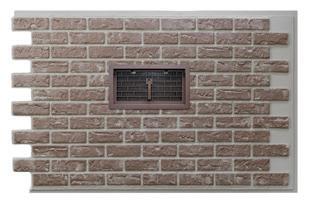

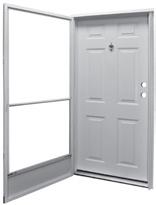

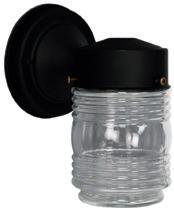




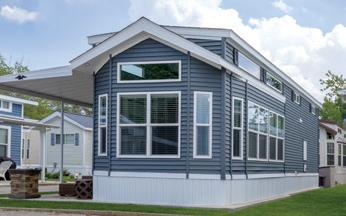







www.stylecrestinc.com | 800.945.4440 HVAC | Foundation Covers | Doors & Windows | Steps & Rails | Set Up Materials | Vinyl Siding | Plumbing | Electrical
Strong. For 50 years, Style Crest® has demonstrated its commitment to the manufactured housing industry with an extensive product offering and a dedicated service platform that their customers count on to support the success of their businesses.
Half a Century and Going
Fed Should Be Decisive
By the time you read this, the Fed may already have cut rates. That is the situation we find ourselves in given the recent correction in equities, which were at a record high only eight trading days ago but were down 12.8% from that peak as of the market close on Friday, February 28th.
Fears about the economic effects of the Coronavirus have driven equity prices lower and led to calls for the Federal Reserve to cut rates. But we think a rate cut – any rate cut –would be a mistake. Nominal GDP – real GDP growth plus inflation – is up 4.0% versus a year ago and up at a 4.4% annual rate in the past two years. These growth rates suggest short-term interest rates should be higher, not lower. If people become less productive because they’re scared of getting sick, lower interest rates won’t change that.
Part of the problem is that the Fed spent much of 2019 agonizing over potential trade wars and Brexit, resulting in three rate cuts of 25 basis points each. Yet, in the end, key trade agreements were reached and Brexit didn’t tank the UK economy, much less hurt the US. The Fed didn’t need to cut rates last year and shouldn’t now.
However, the Fed looks poised to move, either at the next meeting on March 18 or perhaps before. That’s the upshot of Fed Chairman Jerome Powell’s Friday statement that the virus “poses evolving risks” the Fed is “closely monitoring developments,” the Fed will “act as appropriate to support the economy.” Clearly, a rate cut isn’t going to be able to cure a virus. However, the Fed believes that the higher asset prices that may result from lower rates will generate a “wealth effect” that boosts consumer spending and underpins demand.
Meanwhile, the futures market in federal funds is pricing in one 25 bp rate cut by March 18 and the market consensus is for three or four such cuts by the end of the year. The absence of any Fed pushback against these expectations suggests policymakers would be comfortable with this outcome, even though they’re not yet committed to fulfilling them.
This may sound odd at first. But if the Fed ends up cutting rates – again, a policy we think is unneeded and unhelpful –we think it should go big. Instead of trickling out measly little rate cuts of 25 bp each at the next few meetings, the Fed should cut rates by something like 75-100 bp all at once on or before March 18.
By Brian S. Wesbury and Robert Stein
The key is that the Fed would then pair that one big rate cut with a statement, a “dot plot,” and a press conference that shows the Fed is committed to lifting rates back up once we’re past the economic fears related to the Coronavirus.
The problem with the drip, drip, drip approach is that if the Fed cuts rates only 25 bp while the market expects more rate cuts later on, it incents households and businesses to postpone activity and decisions. Why act now, when we all know rates are going even lower?
Again, the best option is doing nothing; monetary policy isn’t a flu vaccine and rates, as low as they already, are not an impediment to economic growth. But if the Fed is ready to act, decisive would be much better than wishy-washy.
BRIAN WESBURY
800 621 1675
https://www.ftportfolios.com/
Brian Wesbury is Chief Economist at First Trust Advisors L.P., a financial services firm based in Wheaton, Illinois.


ROBERT STEIN
800 621 1675
https://www.ftportfolios.com/
Robert Stein is Deputy Chief Economist at First Trust Advisors L.P. a financial services firm based in Wheaton, Illinois.
This report was prepared by First Trust Advisors L. P., and reflects the current opinion of the authors. It is based upon sources and data believed to be accurate and reliable. Opinions and forward looking statements expressed are subject to change without notice. This information does not constitute a solicitation or an offer to buy or sell any security.
- 18 -
Correcting the Manufactured Home Myth
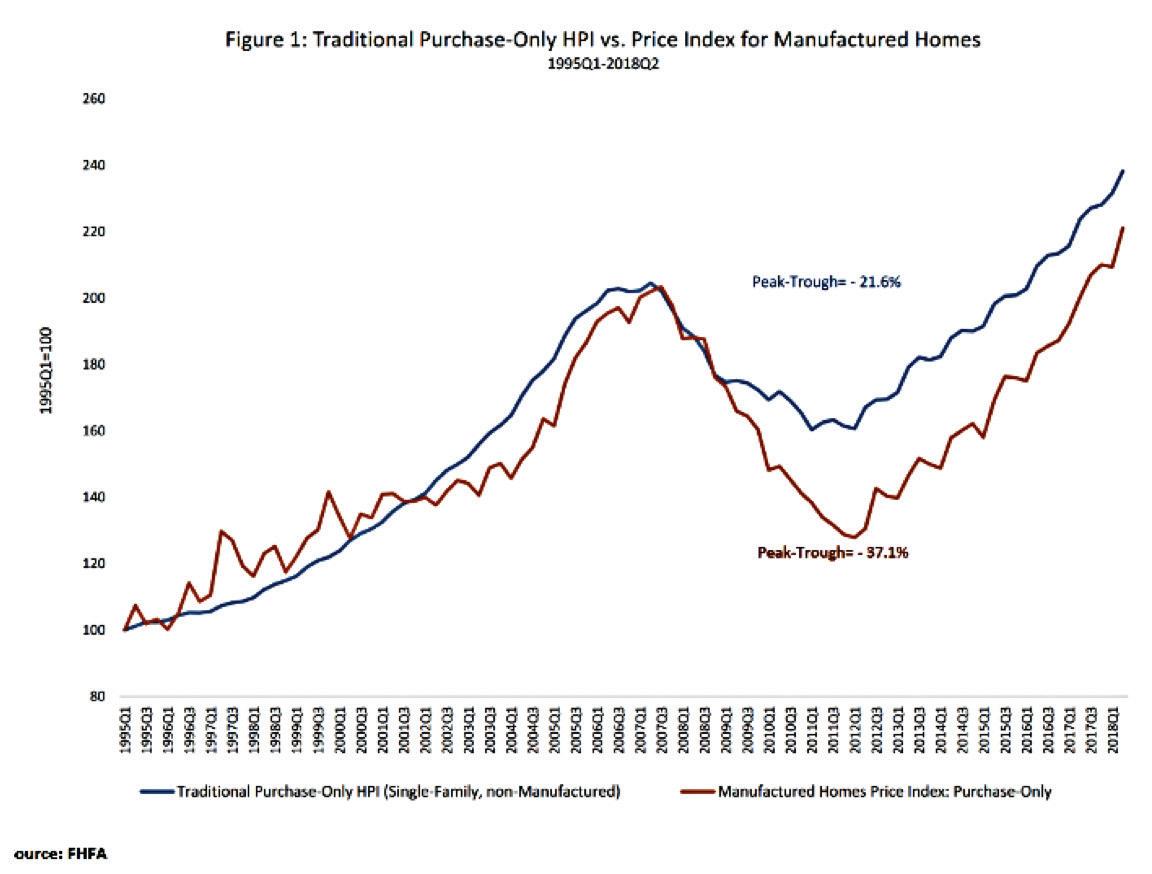
Overview
The Myth that manufactured homes leave the factory and depreciate steeply to worthlessness, is a falsehood that is damaging to the entire industry, from hesitant lenders to skeptical end users. Statistical studies are now available to show the similarities between factory-built homes and standard houses. But, the reader can and should prove it to herself/ himself using real local data.
Repetition ≠ Truth
In the era of “Fake News”, inaccurate and unsubstantiated information can be repeated over and over until it becomes “fact” to a huge audience. However, there is no such thing as information alchemy. Repetition and volume cannot change myth into fact in the real world. Such accepted myths often have serious consequences. Hence, the myths should be exposed, debunked, and corrected. They should not be allowed to stand unchallenged.
The Myth
The Myth in the manufactured home universe, is that manufactured homes depreciate like cars. In other words, The Myth states that manufactured home values decline quickly from the day they are set. The implications of The Myth are devastating for anyone that will rely on a manufactured home in the future for: collateral, income, or resale. For example, who in their right mind would underwrite a 20-year loan on a manufactured home, if it will be worthless in 10 years? No wonder The Myth strikes fear in the hearts of lenders, investors, and end users.
The Repeat Offenders
There are many repeaters of The Myth including some in our own industry. Two of the loudest and broadest sources of spreading The Myth include talk show host Dave Ramsey and the Public Broadcasting Service (PBS).
In The Total Money Makeover, Ramsey stated that: “People who buy a $25,000 double-wide manufactured home will in five years owe $22,000 on a trailer worth $8,000.” Thus, he opined that the home will lose 68% of its value over 5 years or nearly 14% per year and will be worthless after 7 years.
During his June 30, 2018 edition of The Dave Ramsey Show, Dave stated that “Some of you are buying $70,000 to $80,000 versions of doublewides and 15 years later it’s worth $10,000”. So, in this edition he opined that the homes depreciate by roughly 87% over 15 years (6% per year) and will be worthless after 17 to 18 years. He stated, “It’s just common sense” that the value will “drop like a rock”.
By Mark D. Simpson
During the January 2, 2016 episode of the PBS News Hour, reporter Stephen Fee presented a story entitled “Mobile Home Owners Feel Financial Strain”. Mr. Fee explained, “Like cars, manufactured homes often depreciate, losing value the longer they’re owned.” He then cited an example where a manufactured home depreciated by 50% over a 10 year period. This would indicate depreciation equal to 5% per year and a worthless home after 20 years.
The Takeaway
These few examples of misinformation can be condensed to claims of depreciation ranging from 5% to 14% per year and maximum economic lives ranging from 7 to 20 years. If Ramsey and Fee were correct, manufactured homes would be abandoned or scrapped after no more than 7 to 20 years and their values during their economic lives would look something like the graph, straight downhill.
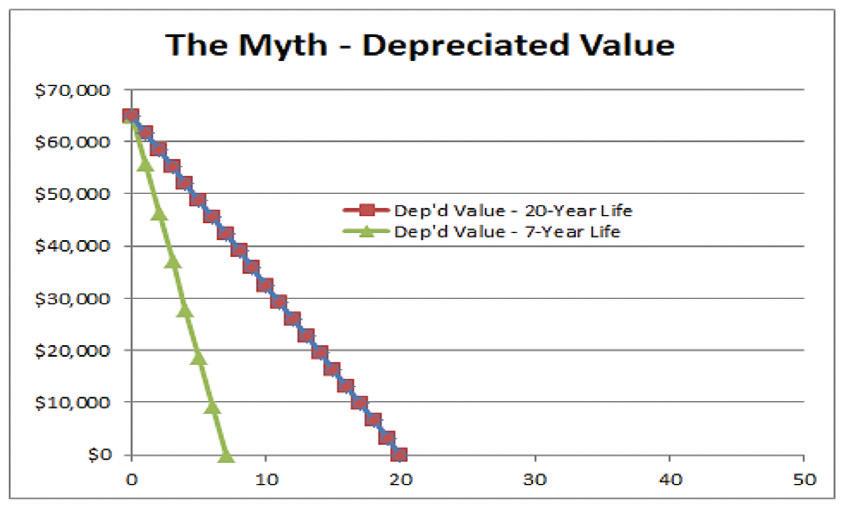
Who Do You Believe
Ramsey’s book cover boldly states, “More than 5 million copies sold”. He must be an expert, right? On his website, Ramsey confesses that he took a beating in an early real estate investment. From his failure, he rose from the ashes and began advising people. Who can you trust?
The Truth
The truth about manufactured home lives and values, from a macro perspective, can be observed in the recent study
- 19 -
Correcting the Manufactured Home Myth Cont.
entitled “Manufactured House Price Indexes” prepared by the Federal Housing Finance Administration (FHFA). The FHFA graph below clearly illustrates the pricing similarities between manufactured homes and standard homes. The study concluded: “In general, the figures suggest that manufactured homes have seen price trends broadly similar to those of other homes.”
Test for Yourself
Extensive data-based studies are important and can be enlightening. But, we also should be able to observe the truth in our own neighborhoods on a more basic level. It has been oft quoted that we should not invest in businesses that we don’t understand. In fact, we all can and should do our own research. We do not have to passively accept anyone’s claims. The following analyses can be done for your own submarket using basic data sources and perhaps a local Realtor or appraiser.
A first way to analyze the situation is by simple observation. If Ramsey and The Myth were correct, we should not be able to find any manufactured homes in use that are more than 7 to 20 years old. If a home is worth $0, it has no functional utility and will be abandoned or scrapped. Well, from my experience, there are many manufactured homes that are still functional after 40 or 50 years, which would be the initial evidence to discredit Ramsey’s claims. The simple fact is that there are many manufactured homes that are still in use and have substantial value for many decades after Ramsey claimed they would be useless. The previous graph (The Myth), clearly does not reflect reality. Go observe for yourself as a first step.
sale prices of the homes on the Y-axis and the years of construction on the X-axis. I also inserted the average cost new for each year.
If The Myth were true, then all of the red dots for homes 20 years or older would lie flat on the X-axis at $0 value. Clearly, they do not. Further, most of the resale transactions that we studied were conducted at prices that were well above the respective average sale prices when new. Hence, these units were selling for more than their initial sale prices decades later. This represents APPRECIATION, not depreciation “like a rock”. That is the OPPOSITE of The Myth.
A third method can involve sale-resale analyses of manufactured homes with land. These transactions can be researched for historical sales and then compared to more recent sales. Annual appreciation or depreciation can be calculated for past periods or more recent time frames.
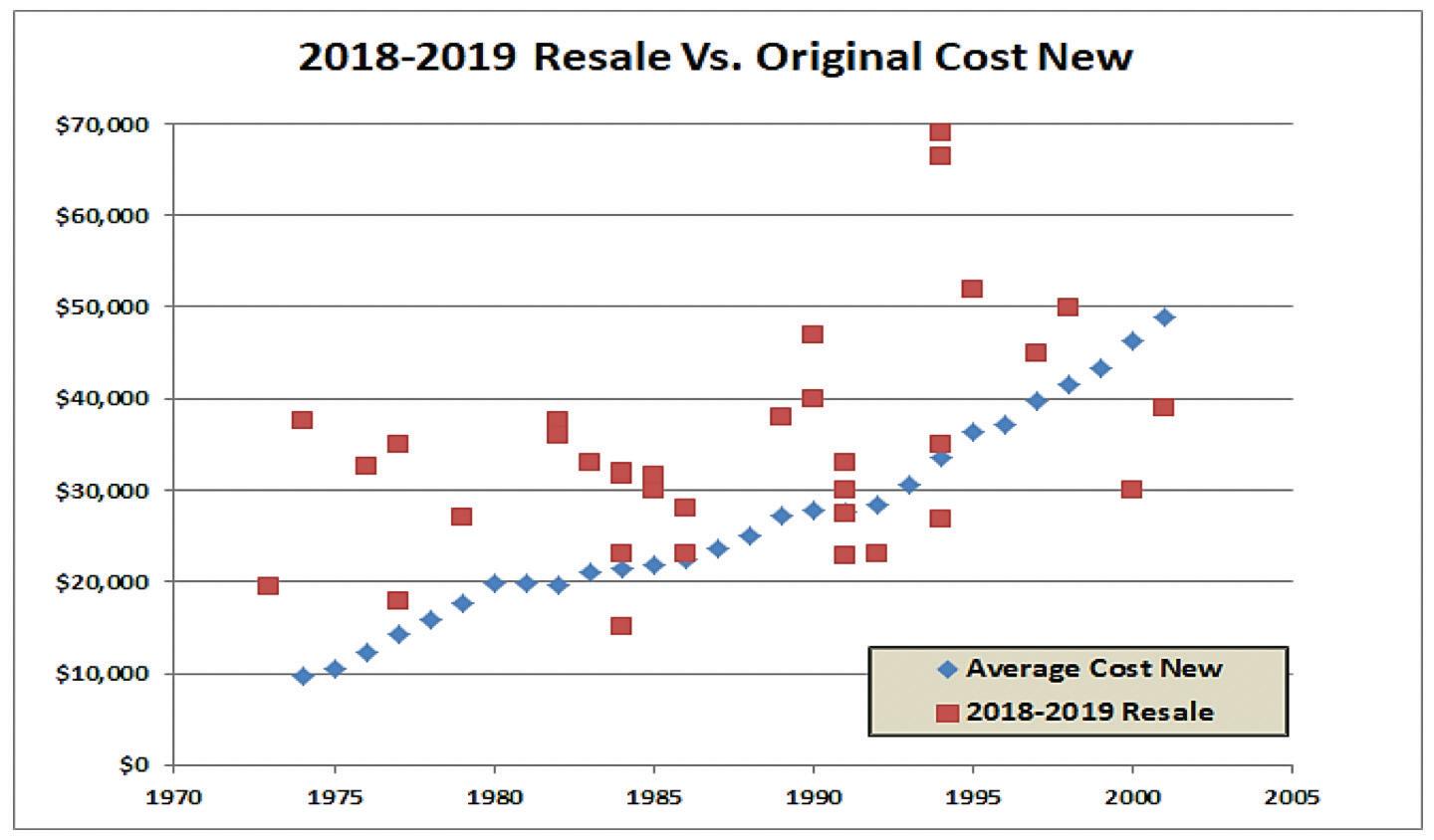
As an example, I researched a freestanding manufactured home (built in 2010) on a one-acre parcel that borders my community. This property was sold for $124,900 in early 2016. According to The Myth, the home should be nearly worthless and the property should be approaching the land value only equal to about $85,000. However, the property was sold again in late 2019 for $190,000. That means the seller achieved APPRECIATION equal to 11.5% per year. Once again, that is the opposite of The Myth.
Conclusion
The Myth is destructive to our industry. Read the available studies and do your own local research.
Mark D. Simpson holds the MAI designation from the Appraisal Institute and earned an MBA in Finance from the State University of New York at Albany. He has practiced commercial real estate appraisal throughout the U.S. for 30 years and has owned a variety of investment properties including the first Agrihood for Manufactured Homes in America. MarkSimpson@Brighthouse.com
A second analysis involves a more detailed local study of recent sale prices (without land) on leased lots. I used data from several manufactured home parks in my own submarket of Eastern Hillsborough County, Florida. I plotted the recent
- 20 -
For the third consecutive year, industry members are welcome to participate in a golf tournament immediately preceding the South Central Manufactured Housing Show (‘The Tunica Show’).

The ‘TUNICA TEE-OFF’ four-person ‘best ball’ scramble has been set for MONDAY - MARCH 23rd, 2020 at Tunica National Golf Course on Highway 61, just a short drive from the Show’s host hotel.
Registration and lunch will begin at 12:00 Noon, followed by a ‘shotgun start’ at 1:00 p.m.
Registration fees will include: lunch, greens fees, shared cart, practice balls on the driving range and refreshments on the course
Proceeds will benefit the Manufactured Housing Council – the political action committee of the Arkansas Manufactured Housing Association. The Council works for the betterment of the industry by supporting industry-friendly candidates for elective offices.
Hole sponsorships are available, as are ‘presenting sponsorships’ for industry members wishing to sponsor lunch, beverage carts or tournament prizes.

Mulligan packages will also be available, including: two (2) mulligan shots, one ‘Tee Buster’ (allowing the player to drive from the closest tee box on a par 5 hole once during the round) and eligibility for ‘Closest to the Pin’ and ‘Longest Drive’ prizes on select holes.
To participate, sponsor or receive more information – contact J.D. Harper @ (501) 663-8444 or by e-mail at jdharper@amha.net. Credit card payments are gladly accepted!
- 21ARKANSAS MANUFACTURED HOUSING ASSOCIATION 1123 South University, Suite #720 - Little Rock, AR 72204 - Phone: (501) 663-8444 - Fax: (501) 664-8447
Golf Tournament Scheduled before Industry Show at Tunica
Discriminatory Energy Regulation Looms Once Again
Like a monster in a B-Grade horror movie that refuses to die, the specter of excessive, discriminatory and extremely-costly federal manufactured housing energy “conservation” standards have emerged once again, this time courtesy of energy special interests and a distinctly un-Trumplike cave-in by the leadership at the U.S. Department of Energy (DOE). As a result, the industry finds itself, once again, faced with the prospect of extreme energy-based regulatory burdens that are not only unnecessary, as shown by extensive federal data, but will simultaneously exclude millions of Americans from the dream of homeownership, directly contrary to President Trump’s affordable housing policies and the express mandate of the White House Council on the Elimination of Regulatory Barriers to Affordable Housing.
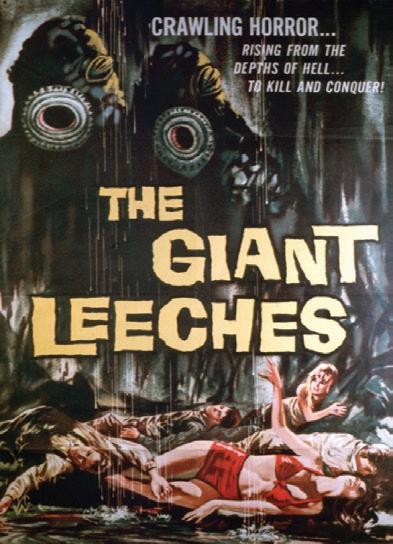
The immediate source of this looming threat is a court order issued at the end of 2019 in a federal case filed by the environmental activists at the Sierra Club. The Sierra Club sued former DOE Secretary Rick Perry in the U.S. District Court for the District of Columbia in late 2017, seeking an order compelling DOE to proceed with the adoption of manufactured housing energy standards under section 413 of the Energy Independence and Security Act of 2007 (EISA). DOE moved to have the case dismissed, claiming that the Sierra Club lacked legal “standing” to assert such a claim on behalf of its members. The court, however (in the person of Judge Emmet Sullivan, a Bill Clinton appointee), denied that motion in an order entered on March 12, 2019.
This set up a potential trial on the merits of the case, which MHARR strongly urged DOE to undertake because of the fundamentally corrupted rulemaking process that led to both DOE’s 2016 proposed energy standards rule and the Department’s 2018 revised manufactured housing energy proposal, set out in a Notice of Data Availability (NODA). More on this in a moment. DOE, however, in a practice that was all too commonplace during the Obama Administration – and has inexplicably been carried over to the Trump Administration in this case by some at DOE and the Department of Justice (DOJ) (which ostensibly “defended” DOE in this case) – folded like a cheap suit and agreed to a “Consent Order” which requires DOE to propose manufactured housing energy standards under EISA no later than May 14, 2021, and to
 By Mark Weiss
By Mark Weiss
adopt final manufactured housing energy standards no later than February 14, 2022.

Whether the standards proposed by DOE under these courtordered deadlines will be the 2016 proposed standards, the 2018 NODA standards, some variant thereof, or something completely different, is unclear and, indeed, unknown at the current time. Suffice it to say, however, that MHARR has already stressed to DOE in writing that any proposed standards that are linked to, or in any way derived from DOE’s previous fatally-defective rulemaking process in this matter, are – and will be – totally unacceptable and will be vigorously opposed through any and all available means. MHARR, rather, as it has previously asserted, maintains that any new energy standards rulemaking – if pursued at all -- must go “back to the drawing board” and begin-over from the start, with a totally new process that is not in any way tainted or impacted by the illegitimate and invalid DOE “negotiated rulemaking” proceeding that led to both the 2016 proposed rule and the 2018 DOE NODA (as established by MHARR in its September 2018 NODA comments).
While the Sierra Club lawsuit, then, is the immediate cause for the impending revival of extreme and discriminatory DOE manufactured housing energy standards which MHARR has previously beat-back time and time-again – and had successfully stifled until they were revived by staff of the Manufactured Housing Institute (see below) -- this entire matter is a prime example of a self-inflicted industry wound. And while the full story of the corrupted “negotiated rulemaking” process that followed is set out in detail in comprehensive MHARR regulatory comments filed with DOE in August 2016 and September 2018 (both of which can be found at MHARR’s internet website, www.manufacturedhousingassociation.org),
- 22 -
Discriminatory Energy Regulation Looms Once Again Cont.

it would be useful to highlight here just some of the deceitful tactics utilized by DOE and its allies in order to advance extreme and unnecessary manufactured housing energy regulation.
Put simply, DOE energy regulation, as of early 2014 – well beyond the five-year EISA deadline for the adoption of DOE manufactured housing energy standards -- was going exactly nowhere. MHARR -- which had been successful in attaching language to EISA section 413 requiring public notice and comment on any DOE-proposed energy standards and prior review by the Manufactured Housing Consensus Committee (MHCC) -- through pressure on HUD, DOE and the MHCC, was able to keep new federal energy standards stalled at DOE, which had gone through multiple fits and starts on a “draft” proposed rule. In fact, the entire issue had all but disappeared from the regulatory and MHCC landscape until the thenMHI Regulatory Affairs Vice President, together with specific named energy special interests, in May 14, 2014 and May 28, 2014 communications to DOE, revived the entire matter, calling for DOE to undertake a “negotiated rulemaking” to “develop” federal manufactured housing energy standards pursuant to EISA, with “a tight meeting schedule” and “a minimum [number] of meetings” despite the highly-technical and cost-intensive nature of those regulations. As a result, a DOE energy rulemaking that had been stagnant and, as later learned by MHARR, had produced a “draft” proposed rule that had been rejected by the Office of Management and Budget’s Office of Information and Regulatory Affairs (OIRA), was effectively re-started and revitalized with the help of part of the industry
sheet” incorporating supposedly “new” recommended energy standards after only a few months of highly-truncated deliberations. What was never disclosed by DOE, however, and had to be unearthed by MHARR through multiple Freedom of Information Act (FOIA) requests, was a pattern of deceit and manipulation of the supposed “negotiated rulemaking” process by DOE, to produce the result that DOE officials and its special interest allies wanted.
This manipulation included, but was not limited to: (1) collusion by DOE with its special interest allies to produce a “draft” manufactured housing energy standards rule in 2011 with no public input; (2) the “impermissible” leak of that “draft” proposed rule (as characterized by DOE’s Office of General Counsel) to DOE’s special interest allies; (3) failure to disclose that “draft” rule or inputs received from special interest allies; (4) failure to disclose the “impermissible” leak of the 2011 draft rule despite requests by MHARR; (5) failure to disclose either the existence of the 2011 “draft” rule or its rejection by OIRA; (6) failure to disclose a directive by OIRA to “start-over” the entire DOE manufactured housing energy rulemaking process; (7) failure to disclose surreptitious coordination between DOE and its special interest allies to conduct a contrived “negotiated rulemaking” process in order to effectively circumvent OIRA’s “start-over” directive; and (8) failure to disclose surreptitious DOE coordination with its special interest allies to establish a “negotiated rulemaking” working group dominated and effectively controlled by “insider” selective leak recipients in order to produce a proposed rule consistent with DOE’s desired outcome.
And, just in case its blatant manipulation of the so-called “negotiated rulemaking” process – stacked with DOE special interest allies – did not work, DOE, in a plot described in various public documents, worked with the part of the industry to manipulate industry opinion in favor of national DOE energy standards for manufactured homes. This was fueled by the award, by DOE and various DOE sub-entities, of more than $1 million in supposed “research” contracts to an MHI-affiliated “research” organization.
What then followed – as was extensively reported by MHARR at the time – was a sham “negotiated rulemaking” dominated by MHI-member participants and energy special interests, which utilized non-public data inputs to produce a “term
In the end, the DOE “negotiated rulemaking” working group wound-up approving a “term sheet” of proposed manufactured housing energy standards that, according to MHARR calculations provided to the working group, would have added as much as $6,000.00 to the retail cost of a new multi-section manufactured home – costs that (as later confirmed by the George Washington University Regulatory Studies Center) could not begin to be recovered by a manufactured homeowner over the typical ownership period of a new HUD Code manufactured home. And that astronomical figure did not include costs related to testing,
- 23 -
Discriminatory Energy Regulation Looms Once Again Cont.
enforcement and regulatory compliance, because standards relating to those matters were not addressed or developed by DOE until after its 2016 proposed rule was published. Consequently, the cost of any final rule based on the working group’s term sheet, would have far exceeded even the $6,000.00 per home cost estimated by MHARR. Yet, astoundingly, only MHARR voted against the working group’s recommended term sheet, while MHI and all of its members voted to approve the recommended standards (with just one abstention).
The 2016 proposed DOE standards, accordingly, are the product of a fundamentally tainted standards development process, and a woeful illustration of what can occur when part of the industry says one thing, but does another. Further, they were not, have not and cannot ever be “cured” by any subsequent means or measure(s). As a result, they must never be revived or used as the basis for any action by DOE on this matter. And, insofar as the 2018 NODA proposal, by its express terms, was based on “data” developed and “analyzed” as part of the tainted “negotiated rulemaking” process, that proposal, as well, is fundamentally and inherently flawed and cannot form the basis for any legitimate standards proposal going forward.
And all of this does not even begin to address the overriding fact that, according to U.S. Census Bureau data, median monthly energy costs for HUD Code manufactured homes, constructed in accordance with existing HUD standards –including existing HUD energy standards – are already lower than site-built homes for both heating oil and piped natural gas, and only slightly higher for electricity. DOE manufactured housing energy standards, accordingly, would be a purported solution (and not even a good or cost-effective one at that) in search of a “problem” that simply does not exist
Any revival of this proceeding, therefore, whether ordered by a court or not, would be totally inconsistent with the regulatory reform policies of President Trump and in violation of the regulatory reform Executive Orders (EOs) which have been the hallmark of his administration in the regulatory arena (including Executive Orders 13771 and 13777, and EO 13878, which created the White House Council on Eliminating Regulatory Barriers to Affordable Housing). DOE’s senior leadership, consequently, instead of following the feckless lead of an ineffectual and “swamp”-infested DOJ and Washington, D.C. United States Attorney’s office – and DOE career bureaucrats -- regarding this matter, should instead comply with and fully honor the regulatory reform policies of the President and his Administration to terminate the DOE manufactured housing energy standards travesty that has played out for more than a decade.

Meanwhile, the entire industry needs to shake off the impact of years-worth of misinformation spread by DOE and its special interest allies regarding manufactured housing energy standards, and firmly reject the entire concept of discriminatory DOE manufactured housing energy standards that will cause major harm to both the industry and American consumers of affordable housing. MHARR, for its part, has already communicated with new DOE Secretary Dan Brouilette, calling on DOE to put aside this travesty and to address the issue of manufactured housing energy standards as a regulatory reform issue. Put simply, manufactured homes are already energy efficient. The last thing that either consumers or the industry needs (as noted already by the MHCC) is highcost energy standards with regulatory compliance costs that cannot be recovered by homeowners over the ownership period of the typical mainstream HUD Code home.
MHARR is a Washington, D.C.-based national trade association representing the views and interests of independent producers of federally-regulated manufactured housing.
“MHARR-Issues and Perspectives” is available for re-publication in full (i.e., without alteration or substantive modification) without further permission and with proper attribution to MHARR.

- 24 -







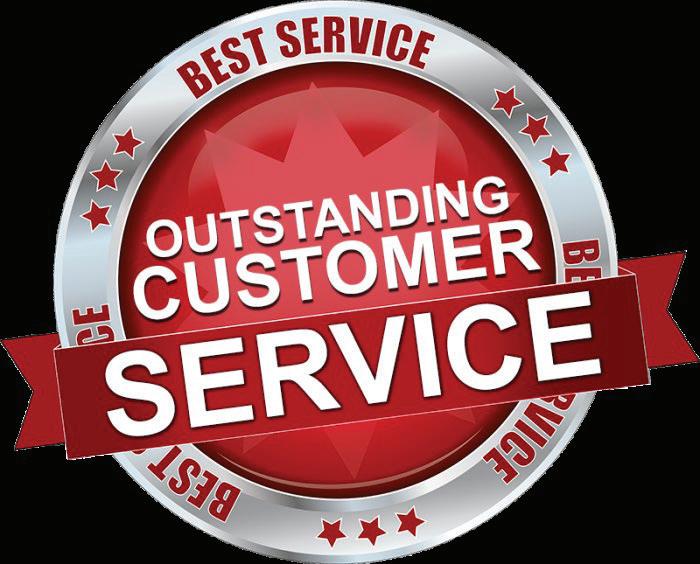
• We find the best coverage value for your tenants • Tenant owned homes repaired and replaced when damaged • Added layer of liability with home lienholder protection • Flood insurance coverage Kala Kilgore 832-562-2530 kala@mobileagency.com Se Habla Español – Luz@ mobileagency.com (800)458-4320 x111
Manufactured and Modular Housing in Wisconsin Has an Annual Economic Impact of more than $2.65 Billion
Manufactured and modular home manufacturing, retail and servicers, and park residents support 26,063 jobs in Wisconsin
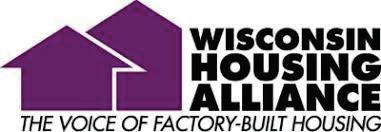
[Madison, WI] – [January 14, 2020] – A new report issued by the Wisconsin Housing Alliance (WHA) demonstrates the vast economic impact of manufactured and modular housing in Wisconsin. According to the report, three sectors of the manufactured and modular housing industry, manufacturing, retail and servicers and park residents, generate more than $2.65 billion and 26,063 jobs in Wisconsin annually.
Developed in partnership with the University of WisconsinWhitewater Fiscal & Economic Research Center, the report shows that manufactured home manufacturing has an $185.9 million economic impact and creates 1,115 jobs in Wisconsin each year. Manufactured home manufacturing also accounts for $48.7 million in total wages and $4.2 million in state and local taxes.
Manufactured home retail and servicers are responsible for $456.4 million in annual economic impact, with 2,884 total jobs, $85.7 million in total wages and $31.5 million in state and local taxes.
The economic impact of manufactured home park residents is even more staggering, contributing $2.15 billion to Wisconsin’s economy annually. Manufactured home park residents account for 22,064 total jobs, $881 million in total wages and $157 million in state and local taxes.
These factions of the manufactured and modular housing industry also have a substantial economic impact supporting the following industries each year:
• Medical Care - $338.7 million
• Retail - $295.8 million
• Real Estate & Management Services - $268 million
• Utilities - $229.2 million
• Restaurant - $208 million
• Entertainment - $190 million
• Manufacturing & Construction - $168.4 million
By Amy Bliss and Professor Russell Kashian PhD
• Grocery Stores - $106.7 million
• Sales & Services - $31 million
• Wholesale trade - $6.2 million
Amy Bliss, Executive Director of the Wisconsin Housing Alliance says, “This report demonstrates why policymakers and elected officials at all levels of government should prioritize eliminating barriers to affordable housing, specifically factory-built housing in communities everywhere. The impact of removing obstacles to housing is huge.”

Professor Russell Kashian PhD, lead investigator for the study, observes: “The issue of affordable, quality housing is today’s challenge. We need housing, and manufactured housing is part of the solution. As this report details, more than 100,000 people live in manufactured housing in Wisconsin. They contribute more than $2.65 billion in economic activity and support over 26,000 jobs. These individuals and families are critical to the economic progress of our state. If our economic development goals include creating jobs, we need to consider their housing needs—we can look around the nation and witness what happens when jobs are created and housing is constrained.”
To access the report, visit housingalliance.us/MH-Economic-ImpactStudy

- 26 -
The Wisconsin Housing Alliance is a trade association that represents manufactured and modular housing in the state. WHA advocates for its members, facilitating relationships which educate, support and promote the factory-built housing industry. For more information, visit www.housingalliance.us
Insurance Coverage for Losses Stemming from the Coronavirus
By Pamela D. Hans and Marshall Gilinsky
The coronavirus has not only sickened tens of thousands of people, killed several hundred, and disrupted life for millions, but has also sharply impacted the secondlargest economy in the world. Many Chinese companies have suspended operations, and international companies like Starbucks, Apple, McDonald’s, KFC, and Pizza Hut have closed their stores in Wuhan and elsewhere. Disney has closed its parks in Shanghai and Hong Kong. Luxury brands have seen their stocks fall. Tesla and other companies have suspended operations. Companies that do not have operations in the geographic areas that are most acutely affected by the outbreak but depend on businesses in those areas as part of their supply chain are also impacted.
Businesses should evaluate whether and how their operations and revenue may be affected by the coronavirus and then closely analyze whether existing insurance policies potentially provide coverage for the losses.

Business Interruption & Contingent Business Interruption Coverage
Standard property insurance policies usually include two types of valuable coverage for disruptions like the coronavirus.
Business interruption coverage insures against losses resulting when the policyholder’s operations are directly affected; and contingent business interruption coverage insures against the risk of indirect losses, such as when suppliers or customers are affected.
Policyholders may be questioning whether their property insurance policies have been triggered if there has not been physical damage to their property as a consequence of the coronavirus.
Coverage for business interruption losses may exist even if there is not physical loss or damage to covered property.
In most property insurance policies, business interruption coverage is triggered when the property at issue suffers “direct physical loss or damage.” Structural damage to the property, however, is not a requirement for coverage; proof that contamination or other relatively intangible conditions like bacteria, gases, and fumes that “rendered the insured property temporarily or permanently unusable or uninhabitable may support a finding that the loss was a physical loss to the insured property.” Mellin v. Northern Sec. Ins. Co., 115 A.3d 799, 805 (N.H. 2015); see also Gregory
- 27 -
Insurance Coverage for Losses Stemming from the Coronavirus Cont.
Packaging, Inc. v. Travelers Prop. Cas. Co. of Am., 2014 U.S. Dist. LEXIS 165232, at *15-17 (D.N.J. Nov. 25, 2014) (“courts considering non-structural property damage claims have found that buildings rendered uninhabitable by dangerous gases or bacteria suffered direct physical loss or damage”).
Additionally, many insurance policies include civil authority coverage, which covers losses that occur when government authorities restrict access to the area where a business is located or that the business depends on for its operations.
Many property insurance policies also provide contingent business interruption coverage, triggered by damage to or disruption of a business’s suppliers, customers, or other key partners. While the policyholder itself need not be physically damaged, it does need to have coverage for the type of damage that affected its suppliers, business partners, or customers.
Commercial General Liability, Directors & Officers, and Errors & Omissions Coverage
While business interruption claims may, at first blush, seem the most likely to follow from the coronavirus outbreak, depending upon the claims that are asserted, insurance coverage may exist under commercial general liability, D&O, and E&O insurance coverage. Commercial general liability insurance coverage provides a defense to claims asserted by third parties for bodily injury or property damage. With some companies experiencing a drop in share price, shareholder suits and others may follow. Those claims may trigger coverage under D&O and E&O insurance policies. People who are being quarantined on cruise ships or by other private entities might have claims about how they are being treated.
Workers Compensation
Workers compensation insurance policies generally cover occupational diseases and injuries, i.e., those that: (1) are due to causes and conditions that are characteristic of and peculiar to a particular trade, occupation, or employment; and (2) are not an ordinary disease to which the general public is equally exposed outside of employment.
There are, however, instances in which “ordinary diseases” may be covered if it is possible to establish a direct connection between the workplace and the circumstances through which the disease was contracted. For example, if an illness
is triggered by an event at the workplace and directly flows from the work that is being performed, it may be argued that the resulting disease has been the result of an accident causing bodily injury. The coronavirus is spread by respiratory droplets and is so highly contagious that health care workers are wearing full hazmat suits while treating those infected. Accordingly, if it is determined that an employee contracted the virus at work, it is quite likely that workers compensation insurance would respond to the injury. Of course, in such a situation, the business’s primary concern would be protection of its employees and the public from any other contraction of the disease, with insurance issues to be resolved in due course.
It is important for policyholders to consider all potentially applicable insurance policies when evaluating coverage for coronavirus- related claims and losses. Consulting with an insurance broker and trusted insurance experts can put policyholders in the strongest position to maximize their insurance recovery in the event of a loss or claim resulting from the coronavirus.
Pamela D. Hans - Hans is the managing shareholder of Anderson Kill’s Philadelphia office. Her practice concentrates in the area of insurance coverage exclusively on behalf of policyholders. Her clients include utilities, mining companies, home builders, non-profit organizations, ethanol producers, commercial lenders, and hog processors, whom she has represented in disputes with their insurance companies. phans@ andersonkill.com, https://www.andersonkill.com/

Marshall Gilinsky - Gilinsky is a shareholder in the Boston office of Anderson Kill and practices in the firm’s Insurance Recovery and Commercial Litigation Departments. During his 20-year career representing policyholders, Gilinsky has recovered hundreds of millions of dollars for his clients, successfully litigating disputed claims under a variety of insurance products, including property and business interruption insurance, commercial general liability insurance, errors and omissions insurance, directors’ and officers’ insurance. mgilinsky@andersonkill.com, https://www.andersonkill.com/

- 28 -
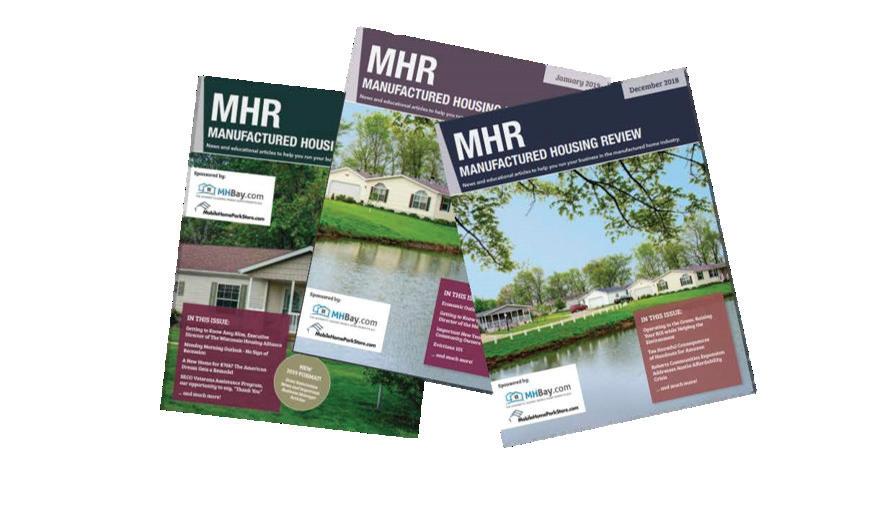
MHR MANUFACTURED HOUSING REVIEW We are an electronically delivered quarterly magazine focused on the Manufactured Housing Industry. From Manufactured Home Community Managers, to Retailers, to Manufacturers, and all those that supply and service them, we supply news and educational articles that help them run their businesses. ManufacturedHousingReview.com Communications regarding any alleged offending, inappropriate, inaccurate or infringing content should be directed immediately to kkelley@manufacturedhousingreview.com along with the communicator’s contact information. Have something to contribute or advertise? Email us at staff@manufacturedhousingreview.com































 By Julia Morrell
By Julia Morrell





































 By Mark Weiss
By Mark Weiss

















